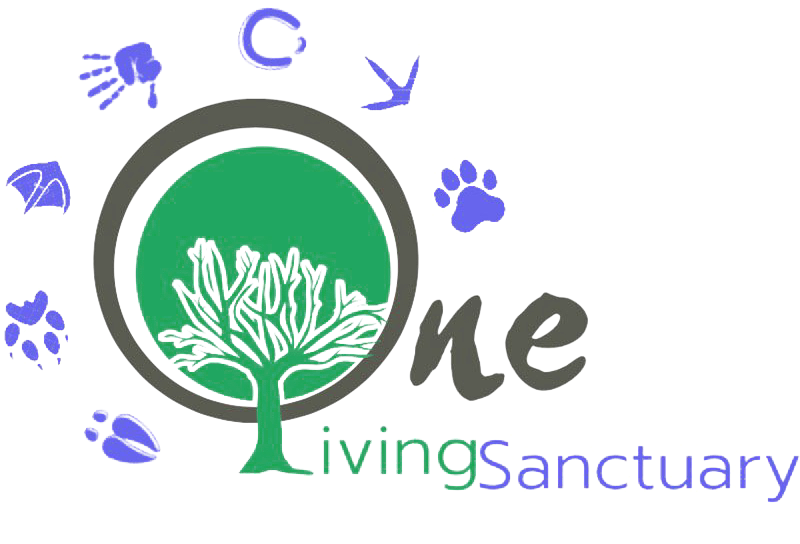What did One Living Sanctuary do in 2020?
A nerve-wracking moment as Sesame explores the barn roof. Goats can get anywhere!
Infrastructure
Fencing
When we moved into our property, we took over a former beef farming operation, with over 2.5 miles (!) of rusty barbed wire fencing in a poor state of repair. Before we could safely rescue any large beings, we had to replace the worst areas of fencing, and remove a lot of barbed wire in the process. This is an ongoing project, and we joke is like painting the Golden Gate bridge: once we’ve completed the fence, we’ll have to start again!
Environment
Fortunately, most of the ground on our sanctuary is covered in grass, or trees. Some areas, and one of them a critical road, were bared ground, and we have covered about 90% of the 1.25 miles in mulch. This mulch helps slow wildfire, preserves the underlying soil, allowing for ecosystem, and helps prevent erosion.
Water & Electricity
This summer was another hot summer, and sadly it dried out our pond in the upper field, removing any water source in the upper fields. We’ve dug 90% of a well, with about another 20ft to go, which will supply both our rescues and wildlife with fresh water. In the meantime, we’ve been keeping a smaller pond stocked by driving water (in our bio-diesel fuelled truck) to where it’s needed. We hope to finish drilling in 2020, and install the pump and solar panels in 2021.
We installed solar panels to offset electricity used, which has generated 3254kWh, or saved about 2535 pounds of coal being burned.
Accommodation
Our long-term goal is to provide camping and tiny homes, but we have to start small! Thanks to an incredibly kind donation, we were able to buy an RV for our incredible animal care worker to call home.
Daisy and her son, Sesame, share a snack.
Rescues
2020 was a wonderful year for rescues! We have provided for-ever homes for:
7 pigs (bringing us to a total of 8)
4 horses
6 goats (bringing us to a total of 9, one of whom was born here)
5 cows (mooooooooooooooooo)
1 duck (bringing us to a total of 2)
2 quail
3 turkeys
oh so many chickens!
Because of your support, the people we’ve rescued will never have to fear humans, and will never be exploited. Their sentience isn’t just respected, but celebrated!
To rescue more, we will need to build another barn in the upper fields, which will require a large amount of capital in 2021.
Mason and her pal Ali, showing how an interspecies community is done!
Community
COVID threw a spanner in the works for some of our plans, but like so many wonderful people, we prevailed! We’ve managed to run community volunteer days, with safe social distancing (it’s easy with 120 acres!). We’ve made new friends, and spread our message of peace further into the Bay Area communities.
We have two confirmed converts to a plant-based life, which will save 803,000 gallons of water per year, 2100 square foot of forest, 730 sentient lives, and 14,600 pounds of CO2.
We’ve run socially distanced tours, allowing people to meet our rescues. Not as many as we’d hoped, but we can’t wait to see you!
Donations
We’ve received about $20,000 in donations this year for which we’re incredibly grateful. One Living Sanctuary is still primarily personally funded, which we’re looking to change as we grow our supporters. Our goals for 2021 include finishing the pump and building a barn, and we need your help to do it!
Gratitude
We can’t thank our donors and volunteers enough, big and small. The difference you make is huge, and we couldn’t have rescued more than 60 animals without your support. If you haven’t stopped by to give a pig a belly rub, mask up and let us know when!
Another team we are incredibly grateful for is the produce team at Nob Hill foods: we visit them most days to collect trimmings - produce that can’t be sold - which keeps our non-humans well-fed throughout the year. We estimate this saves at least $800 a month, which will only grow.




